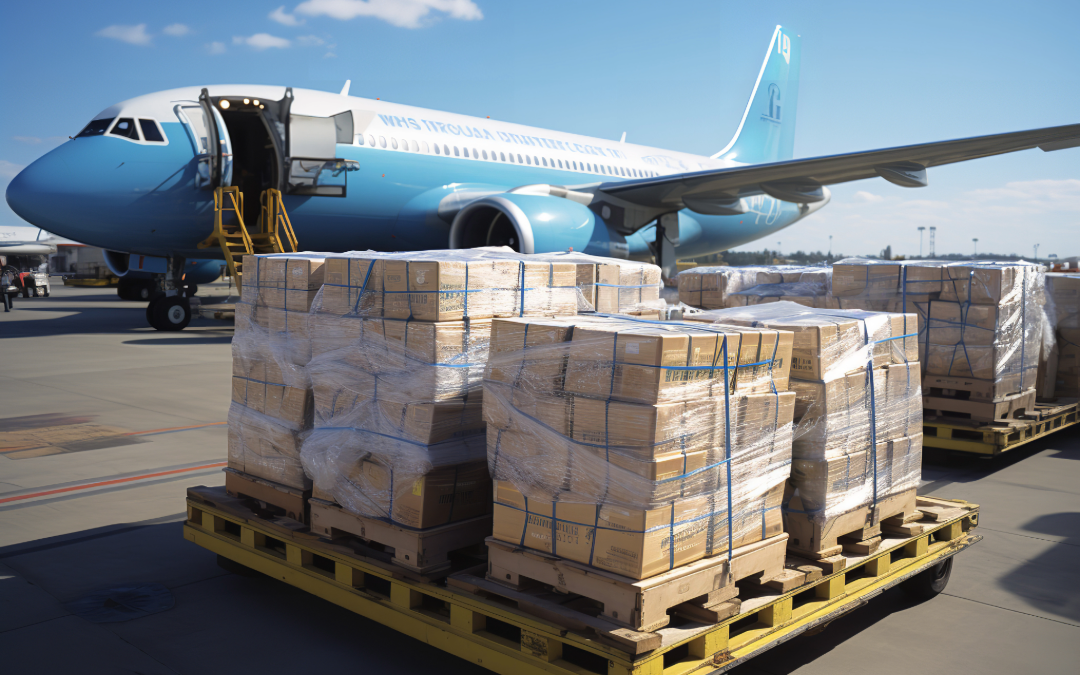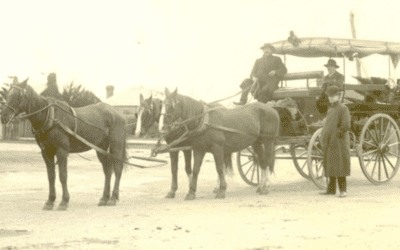Utilizing air freight for operations offers numerous advantages to shippers. Air freight is the fastest method for delivering cargo. While 90% of deliveries are shipped via ocean freight, air freight significantly reduces delivery times. For example, it reduces the shipping time from the U.S. to China from 20 to 30 days by ocean to a mere three days by air. Moreover, air freight is more cost-effective, offering a broader range of destinations, lower insurance costs, and reduced packaging and storage requirements. An efficient air freight checklist can further enhance operational efficiency and ensure seamless transportation of goods.
The advantages of air freight are clear, but how does your cargo get from point A to point B quickly and efficiently? It’s all about the process.
Article Overview
Before booking your shipment
Air imports or airport pickups do not require special driver certifications or a Security Threat Assessment (STAs) on file with operators, meaning anyone can handle this type of shipment. The following are required for air imports:
- Pickup airport and complete address: This is the location where the shipments arrive. It includes the name of their airport and its full address.
- Complete destination address: The full address where the shipment arrives.
- Freight piece count: The total number of individual pieces in the shipment.
- Freight weight: The total weight of the shipment.
- Freight dimensions (LxWxH): The length, width, and height of the shipment. The units for these dimensions should be clear, whether in inches, centimeters, or millimeters.
- Commodity description: A brief description of the goods being shipped.
- Airway bill number: The unique number assigned to the shipment by the airline, used for tracking and documentation purposes.
- Last free day: The final day the shipment can be on hold without additional charges.

Air exports refers to the process of sending goods to other countries or regions via air transportation. It involves steps such as delivering the goods to the airport (airport drops) and offering the goods for shipment (tenders). Air exports require operators to have a Security Threat Assessment (STA) on record and must have the most recent TSA airfreight training. The same requirements for air imports are required for air exports as well as incoterms, HTS code, and shipment ready date.
- International Commercial Terms (Incoterms): A set of international rules that define the responsibilities of sellers and buyers in export transactions.
- The Harmonized Tariff Schedule (HTS): A system used to classify goods imported into the U.S. based on the global HS Code system used to classify trade goods worldwide.
- Shipment Ready Date: The date when a shipment is expected to be ready for pickup or delivery. This date is typically specified by the shipper or consignee and is used to ensure the shipment is delivered on time.
Operating Procedures
- Customs Clearance at Departure
Before the cargo leaves the country, customs clearance is necessary. This involves ensuring that all regulatory requirements are met, and that the shipment complies with export laws.
- Flight Departure and Transit
Once the cargo is on the aircraft, it departs for its destination. During the flight, the airline is responsible for the safety and timely transportation of the goods.
- Customs Clearance at Arrival
Upon reaching the destination country, the cargo goes through customs clearance again. This process ensures that the shipment complies with the import regulations of the destination country.
- Delivery to Consignee or Final Destination
Once the cargo clears customs, it moves from the airport to the recipient’s location. This often involves coordination with local transportation services.
- Unloading and Unpacking
The cargo moves from the aircraft and progresses to a warehouse for further processing. If needed, the goods are unpacked and prepared for distribution or storage.
- Distribution or Storage
We distribute the goods to their final destination or store them in a warehouse based on the consignee’s instructions. Distribution may involve further transportation, such as delivery trucks or other modes of local transport.
- Post-Delivery Documentation and Recordkeeping
After delivery, it’s essential to complete any remaining documentation and maintain records. This includes updating inventory systems, filing post-shipment reports, and ensuring compliance with any post-delivery requirements.
- Billing and Payment Settlement
The final step involves settling payments between the various parties involved in the shipment, including the shipper, air freight forwarder, and other service providers. This includes any assessorial charges incurred during the shipping process.

For air freight services, ensuring goods reach their destination safely and efficiently is key. Here’s a look at what to expect for commodities:
Hazardous Materials
One common type of cargo is Hazardous Materials (HAZMAT), which often includes electronics such as lithium-ion batteries. Due to their potential risks, these items require special handling and packaging to ensure safety during transit. Having a dedicated team trained in the safe and compliant transportation of such materials is critical to ensuring they reach their destination without delays.
Both shippers and carriers must obtain certification from the Department of Transportation (DOT) and the International Air Transport Association (IATA) for shipping hazardous materials. Additionally, the Federal Aviation Administration (FAA) mandates that operators secure approval for all applicable requirements before accepting or transporting hazardous materials.
Packaging and Labeling of Dangerous Goods
To equip shippers and carriers with the necessary requirements, the IATA provides training on preparing and documenting dangerous goods shipments for air transport. The training covers the requirements outlined in the IATA Dangerous Goods Regulations.
Some shippers have a strategic relationship with a warehouse that handles the packaging and labeling of dangerous goods. While this service can be costly, it provides safety and compliance for shippers.
Cold Chain Commodities
Pharmaceuticals: During air transport, pharmaceuticals are transported in specialized containers or packaging that ensures temperature stability. Understanding the critical nature of transporting pharmaceutical products to ensure items maintain their required temperatures is vital.
Produce: Shipping perishable goods by air is the most efficient way to transport, due to their short shelf life. Certain types of produce, such as avocados, require a cold chain to ensure they arrive fresh.
Palletized Freight
Typically, air freight involves palletizing freight, meaning that goods are stacked on a pallet and secured with straps for stability during transit. While some goods may use Unit Load Devices (ULDs) for air freight, not all shipments necessarily use them. Pallets can be much more cost-effective due to the space they take up in the aircraft.
KCH Transportation Air Freight Services
From handling hazardous materials to maintaining precise temperature controls for pharmaceuticals and perishables, each shipment is unique for air freight services. Our dedicated air transport team, with expertise in air freight compliance, maintaining cold chains, and optimizing palletized freight, ensures goods are delivered safely, efficiently, and cost-effectively.
Reach out today to ensure your goods reach their destination without delay.






